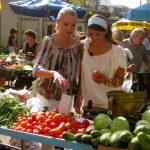Life on the Croatian islands out of season.
The idyllic image of the Croatian islands a majority of Croats have due to summer tourism loses its lustre when the conversation turns to the daily economic life of the second largest archipelago in the Mediterranean. “A few more weeks of the tourist season, and then the islands will be forgotten until the next summer”, says the president of the Island Council Denis Barić from the island of Veli Iž, reports Index.hr on August 30, 2015.
There are 79 islands, 525 islets and 642 rocks and reefs in Croatia. About fifty inhabited islands have a total of 125,082 inhabitants, divided among 51 island towns and municipalities. Croatian policies declaratively give a special status to the islands, which was confirmed by the adoption of the National Programme for Development of the Islands. However, following the adoption by the Parliament, it has not been fully implemented, just like 220 other national strategic documents adopted since independence. “This shows that the state does not have the intellectual capacity to implement it”, says Nenad Starc, one of the creators of the National Programme.
He admits that an error was made because there was no institutional analysis which would show that the current state institutions cannot implement the National Programme. But, the even bigger problem is that the state is starting from the “continental” viewpoint and makes decision about the islands from above, and that the local governments are so fragmented that a significant number of them cannot finance their needs. Therefore, the islands’ authorities are turning to the state for almost everything. The most successful mayors are those who can bring in the most money from Zagreb.
For example, the official report on the islands by the Ministry of Regional Development and EU Funds for 2013 claims that greatest importance is given to the sustainable development of islands. In 2013, the state has invested 1.41 billion kuna of budget funds in the development of islands. The largest amount was invested in transport links with the mainland and other islands, 364 million kuna; followed by utility infrastructure on the islands, 218 million kuna; local transport infrastructure, 161 million kuna. On the other hand, 23 million kuna were invested in the education and culture on the islands, about 20 million kuna in tourism, and about 2.3 million kuna in health services.
“The most important precondition for sustainability of small islands are primary schools with a sufficient number of students in all grades, which can properly carry out its functions. Because, when a young islander must leave the island for compulsory education, no matter how idyllic life on the island is, the family will go with him or her”, explains Starc.
Despite relatively large investments on the islands, their effects are often very hard to see. Barić warns that living on the islands is 20-30 percent more expensive than on the mainland. For example, delivery of water by special ships is affordable just for the first 40 cubic metres, after which the price increases to around 150 kuna per cubic metre. The islands’ economy is at a disadvantage as well. Transport of goods produced on the islands sometimes costs the same as their production, says Barić, adding that production subsidies on the islands are largely symbolic.
The most prominent of all island industries, tourism, is also at a disadvantage. Accommodation facilities are not competitive because for some islands you have to book a ferry month in advance. In addition, water supply depends on the mainland, which was experienced by Hvar this summer, when Makarska suddenly decided to stop the water deliveries, adds Barić.
Sociologists Željka Tonković from the University of Zadar and Jelena Zlatar from the Institute for Social Research in Zagreb have examined the models for sustainable development of the islands. They have concluded that the good economic foundation for the islands represents the balance of agriculture, industry and tourism. Sustainable development requires continuous care of all stakeholders and coordination between local and state initiatives. In doing so, it is important to strengthen the local community and to educate the local population for development of responsible tourism.
Their findings are confirmed by some of the positive examples, coming mostly from the Kvarner islands, especially Krk, which became the first Croatian energy-independent island, and Lošinj, which two years ago received a global award for sustainable development of tourism.









